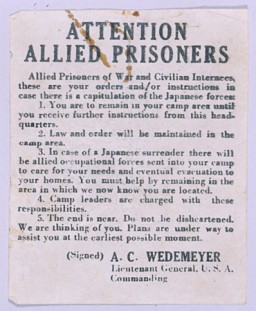You searched for: 跨境电商系统定制开发【TG���������@EK7676】平台包网搭建跨境电商系统定制开发【TG���������@EK7676】平台包网搭建1a8PbYSDcG
<< Previous | Displaying results 351-375 of 652 for "跨境电商系统定制开发【TG���������@EK7676】平台包网搭建跨境电商系统定制开发【TG���������@EK7676】平台包网搭建1a8PbYSDcG" | Next >>
-
“Give Me Your Children”: Voices from the Lodz Ghetto
ArticleThe Jewish children of Lodz suffered harsh conditions after the German invasion of Poland. Read excerpts from diaries where they recorded their experiences.

-
United States Immigration and Refugee Law, 1921–1980
ArticleUS immigration and refugee laws and policies evolved in response to World War I, the 1918 influenza pandemic, and World War II and the Holocaust. Learn more.
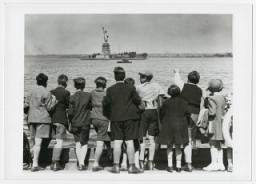
-
Mauthausen
ArticleThe Mauthausen concentration camp was established following the Nazi incorporation of Austria in 1938. Learn about the harsh conditions in the camp.

-
The United States and the Nazi Threat: 1933–37
ArticleLearn about responses in the United States to reports about Nazi anti-Jewish policies and violence against Jews from 1933–37.
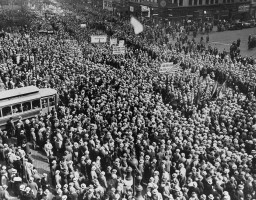
-
Sandor (Shony) Alex Braun describes playing the violin for SS guards in Dachau. after two prisoners before him had been killed
Oral HistoryShony was born to religious Jewish parents in a small Transylvanian city. He began to learn the violin at age 5. His town was occupied by Hungary in 1940 and by Germany in 1944. In May 1944, he was deported to the Auschwitz camp in Poland. He was transferred to the Natzweiler camp system in France and then to Dachau, where he was liberated by US troops in April 1945. In 1950, he immigrated to the United States, and became a composer and a professional violinist.
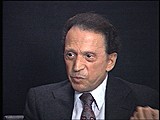
-
Lachwa
ArticleThe Lachwa ghetto was established in Łachwa, Poland in April, 1942. Learn more about the ghetto and uprising.
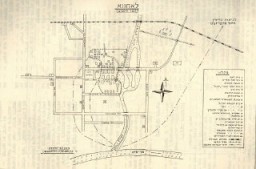
-
Mir
ArticleThe Mir ghetto was established in Mir, Poland in 1941. Learn more about life and resistance in the ghetto.
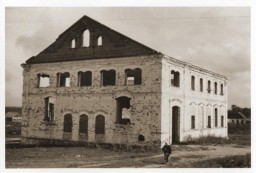
-
München-Schwabing
ArticleLearn about the establishment and history of the Dachau subcamp München-Schwabing, and the role of Eleonore Baur (also known as Schwester Pia or Sister Pia).
-
Bremen-Farge
ArticleLearn more about Bremen-Farge, a subcamp of Neuengamme where the majority of prisoners were used to construct an underground U-boat shipyard for the German navy.

-
Antisemitic Legislation 1933–1939
ArticleHundreds of laws, decrees, guidelines, and regulations increasingly restricted the civil and human rights of Jews in Germany from 1933-39. Learn more.
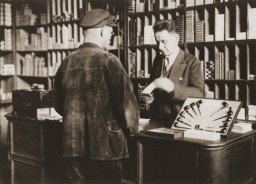
-
International Military Tribunal: The Defendants
ArticleListing of the 24 leading Nazi officials indicted at the International Military Tribunal at Nuremberg. Learn about the defendants and the charges against them.
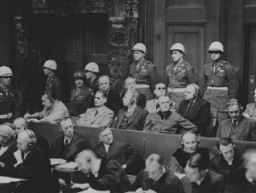
-
Wagner-Rogers Bill
ArticleThe Wagner-Rogers Bill proposed admitting 20,000 refugee children to the US from the Greater German Reich in 1939–40, but did not become law. Learn more

-
Kurt Gerstein
ArticleSS officer Kurt Gerstein was horrified by what he witnessed at the Belzec killing center. Learn about how he recorded what he witnessed and about his postwar fate.
-
Abraham Roman Ellenbogen
ID CardAbraham was the oldest of five children born to a Jewish family in the central Polish town of Rozwadow, where his father was a produce wholesaler. Abraham attended secondary school in the nearby town of Rzeszow and then went on to complete an undergraduate degree at the University of Cracow. 1933-39: Abraham was accepted to law school, despite quotas restricting the number of Jews allowed to enter, and in 1937 he set up a practice in Rozwadow. Two years later, on September 1, 1939, Germany invaded Poland.…
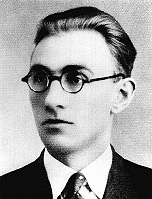
-
Edith Goldman Bielawski
ID CardEdith's parents owned a cotton factory in the town of Wegrow [in Poland]. The Goldmans were a religious family, and raised Edith, her brother and three sisters to strictly observe the Sabbath, Jewish holidays and the dietary laws. 1933-39: Edith attended public school, and also studied at the Beis Yakov religious school for girls where she learned Hebrew, the Bible and Jewish history. Her favorite hobby was knitting, and after finishing secondary school she learned the quilt-making trade. In the…
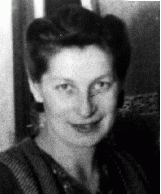
-
Moshe Galek
ID CardMoshe was one of eight children born to Jewish parents in Sochocin, a predominantly Catholic village near Warsaw. Moshe was a self-made man, having founded a successful pearl-button factory in the village. While in his thirties, he married Fela Perznianko, the daughter of a prominent attorney from nearby Zakroczym. He brought his new wife to Sochocin, where they raised four daughters. 1933-39: In 1936 the Galeks moved to Warsaw, attracted by the city's cultural life. When Germany invaded Poland on…
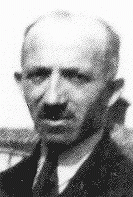
-
Leon Franko
ID CardLeon was born to a large, Ladino-speaking, Sephardic-Jewish family. The Frankos lived in a large house in ethnically diverse Bitola, a town located in the southern part of Yugoslav Macedonia, near the Greek border. Leon's father, Yiosef, was a successful fabric merchant. The Frankos' children attended Yugoslav public schools where they learned to speak Serbian. 1933-39: Upon completing his schooling, Leon became a fabric merchant in Bitola. A handsome man from a well-to-do family, Leon was popular. His…
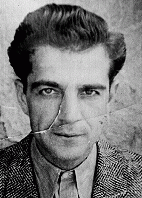
-
Rebecca Pissirilo
ID CardRebecca was the oldest of three children born to Ladino-speaking, Sephardic-Jewish parents. The Pissirilos lived in Kastoria, a small town in the mountainous region of Greek Macedonia near the Albanian border. Rebecca's father was a successful fabric merchant. The Pissirilo children attended public schools. 1933-39: After finishing elementary school, Rebecca went on to study at secondary school. She liked to sing and enjoyed studying. Rebecca kept a diary, like some of the other girls in her class. The…
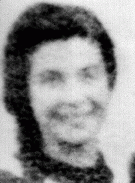
-
Marta Herman
ID CardThe younger of two daughters, Marta was raised by Hungarian-speaking Jewish parents in Kosice, a city in Slovakia. Marta attended a Jewish elementary school. Her father ran a small grocery store. 1933-39: After Marta finished elementary school, she began secondary school. The language of instruction was Slovak and Jews faced no discrimination until November 1938 when Hungarian troops marched into southern Slovakia. With Germany's blessing, Kosice became part of Hungary and was renamed Kassa. Their new…

-
Maria Orlicka
ID CardMaria was born to a poor family in the industrial town of Jaworzno, not far from Krakow, in southwestern Poland. Both of Maria's parents worked. Like her parents, Maria was baptized in the Roman Catholic faith. 1933-39: Maria took care of the house when her parents were working. She was 11 years old when the Germans invaded Poland on September 1, 1939. German troops reached Jaworzno that same month. Jaworzno was in an area of Poland that became formally annexed to Germany. 1940-44: The Germans arrested…
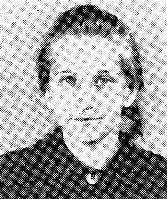
-
Mendel Grynberg
ID CardMendel was raised in a large, Yiddish-speaking, religious Jewish family in Sokolow Podlaski, a manufacturing town in central Poland with a large Jewish population of about 5,000. Upon completing school, Mendel worked as a shoemaker. He was also active in a local Zionist organization. 1933-39: Mendel was married and had a family when the Germans invaded Poland on September 1, 1939. Aircraft bombed the town's market and other civilian targets before victorious German troops marched into Sokolow Podlaski on…
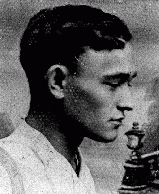
-
Rozia Grynbaum
ID CardRozia was the second-oldest of nine children born to religious Jewish parents in Starachowice, a town in east-central Poland. Their small one-story house served as both the family's residence and their tailor shop. The tailoring was often done in exchange for goods such as firewood or a sack of potatoes. Rozia worked in the shop sewing women's clothing. 1933-39: Rozia married a Jewish tailor from Radom, a large town some 60 miles south of Warsaw. The couple settled in Starachowice, and they ran a tailor…
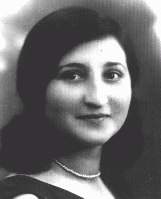
-
Willibald Wohlfahrt
ID CardWillibald was the youngest of six children born to Catholic parents in a village in the part of Austria known as Carinthia. Disillusioned with Catholicism, his father and mother became Jehovah's Witnesses when Willibald was an infant, and they raised their children in their new faith. His father became the leader of the local Jehovah's Witness congregation. 1933-39: Willibald lived in a beautiful area near lakes and mountains. The Wohlfahrts were active in Jehovah's Witness missionary work, even though…

-
Rachel Lea Galperin
ID CardRachel, born Rachel Karpus, was born to a Jewish family in the northeastern Polish city of Vilna. At the age of 16, Rachel married Reuven Galperin, a typesetter for a Jewish newspaper in the city, and the couple subsequently had 16 children. Only nine of the children lived to the 1930s. 1933-39: In addition to caring for her children, Rachel also operated a small grocery on Nowigorod Street. In 1938 Rachel's husband died. One year later, on September 1, 1939, Germany invaded Poland and 17 days after that…
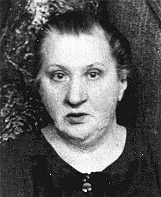
-
American propaganda announcement
DocumentAnnouncement dropped by American planes on Shanghai near the end of the war. [From the USHMM special exhibition Flight and Rescue.]
